Mistletoe Is Coming to Town
For many, mistletoe prompts visions of holiday celebrations — maybe a stolen kiss or two. When it’s not being used as holiday decor, mistletoe is actually a parasitic plant, attaching itself to the branches of trees for water and nutrients. In winter mistletoe is particularly striking, dangling from the branches of deciduous trees.
In the desert Southwest, seeing mistletoe in trees isn’t all that unusual, particularly if you live near the natural desert areas where it is part of the desert ecosystem. As a horticulturist and certified arborist, I am often asked whether or not mistletoe is bad for your trees. People wonder if it has any beneficial value. How can you tell if your tree has mistletoe, and if it does, should you remove it? Let’s get down to the basics about mistletoe and why finding it growing in your tree may not be as bad as you think.
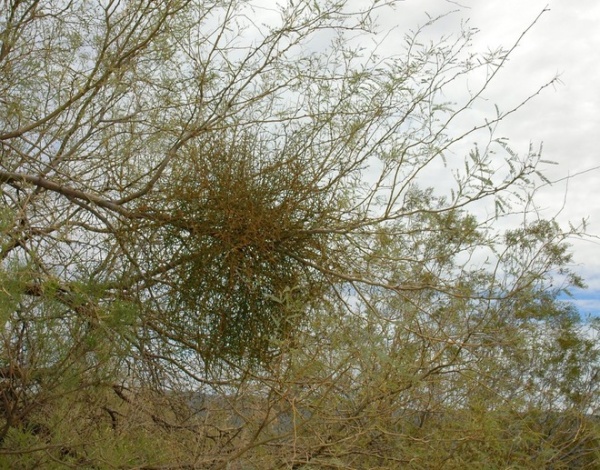
Shown: Phoradendron californicum growing in a little leaf palo verde tree (Parkinsonia microphyllum)
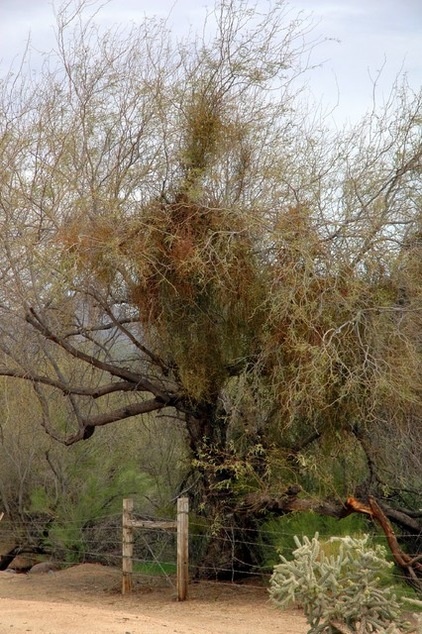
What is mistletoe? Of the approximately 1,000 mistletoe species that exist throughout the world, several broadleaf species can be seen hanging from many doorways during the holidays. European doorways are most likely to be decorated with Viscum album. Phoradendron species are more likely to be seen decorating homes in the United States. (“Phoradendron” means “tree thief” in Greek.)
Dwarf mistletoe (Arceuthobium spp) is considered a serious pest of the conifer forests in North America, Central America, Asia and Africa.
While you won’t see desert mistletoe species decorating any doorways in the Southwest, they can be seen growing in trees‚ particularly if you live near natural desert areas. P. californicum is easily identified by its narrow green stems and scale-like leaves. This species of mistletoe tends to prefer acacia (Acacia spp), ironwood (Olneya tesota), mesquite (Prosopis spp) and palo verde trees typically found growing in the desert regions of California, Arizona, Nevada and in Baja and Sonora, Mexico.
Another species of mistletoe seen in the Southwest is P. tomentosum var. macrophyllum, which has broad leaves and can be seen growing in ash (Fraxinus spp), cottonwood (Populneus spp), sycamore (Plantanus spp) and willow (Salix spp) trees.
Shown: An old native mesquite tree (Prosopis velutina) heavily infested with mistletoe
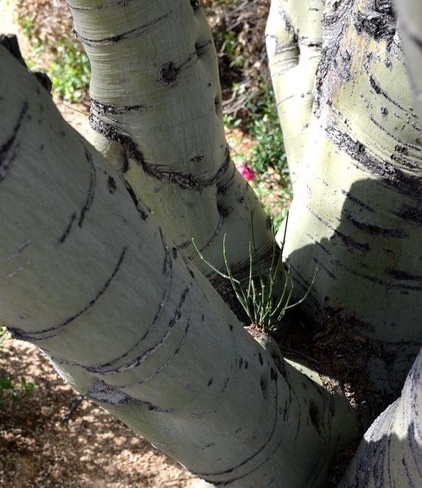
Many mistletoe species can be characterized as parasitic, meaning they rely on the tree for all their water and nutrients. Both P. californicum and P. tomentosum var. macrophyllum are semiparasitic because they rely on the tree for water and minerals but photosynthesize and produce many of their own nutrients. The “roots” of mistletoe, called haustoria, attach to the tree branch and delve into the tree’s vascular system to absorb water and minerals.
It’s important to note that all parts of mistletoe are poisonous, including the berries, except for the berries of P. californicum, whose berries are edible when found growing in catclaw acacia (Acacia greggii), ironwood or mesquite trees.
Shown: New mistletoe growth at the base of a blue palo verde tree (Parkinsonia florida)
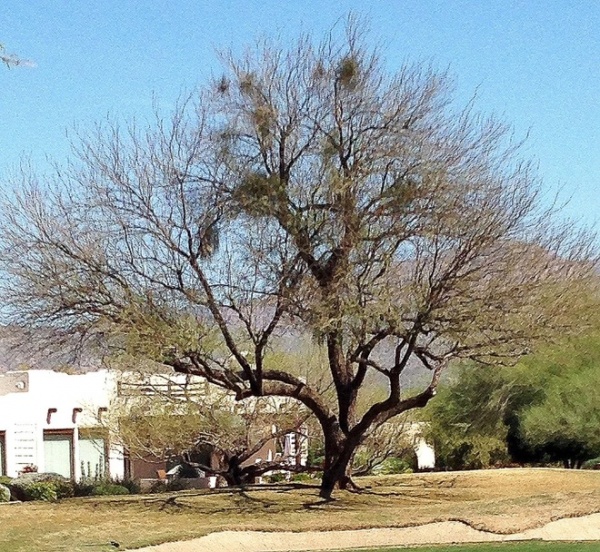
How to tell if your tree has mistletoe. Winter is the best season for spotting mistletoe in trees, since most of the tree’s leaves have fallen and the dense masses of mistletoe are more obvious.
During other seasons it can be helpful to look up from the ground into the tree canopy for any growth that looks somewhat different than the tree branches. Mistletoe grows out in a rather spiky shape at first, eventually forming a globular shape before growing long stems that hang from the branches. Established mistletoe can cause branches to swell where it is attached, so look for any stems growing from these areas, as they may be mistletoe.
Shown: Several mistletoe plants growing on a Chilean mesquite tree (Prosopis chilensis) on a golf course
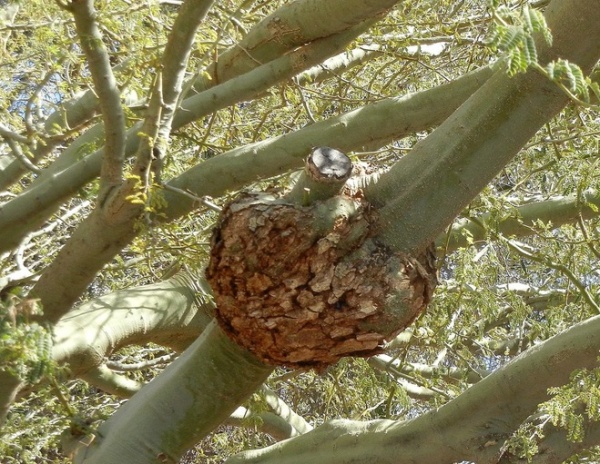
How mistletoe spreads. Birds eat the berries produced by this semiparasitic plant and then fly to another branch or tree to generously deposit the seed, complete with a little fertilizer. The berries then send out their haustoria into the branch, and it all begins again. The berries also have a sticky covering and will stick to the beaks and feet of birds as another way to spread.
The age, species and overall health of a tree can affect whether or not a deposited seed will begin to grow. Generally, younger, healthy trees will be more resistant to the mistletoe’s trying to take root inside its branches. Mistletoe is more often seen growing in older and/or stressed trees.
You are more likely to see mistletoe in your trees if you live near trees that already have mistletoe growing in their branches. Residents in urban areas are less likely to see mistletoe, but it can still occur, particularly if trees have been transplanted from the native desert.
Shown: Swollen area of a palo verde tree where the outer mistletoe stems have been pruned away but will grow back
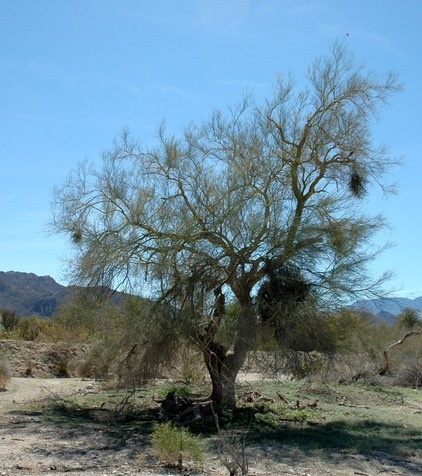
The benefits of mistletoe. While it can be hard to think of a semiparasitic plant as having any beneficial value, let’s look at it in a different way. Mistletoe has been present for tens of thousands of years, peacefully coexisting with its tree hosts.
Berries are an important food source for birds and mammals. The silky flycatcher (Phainopepla) relies on mistletoe for the majority of its diet and is among the several bird species that enjoy mistletoe’s berries in spring. Additionally, birds attracted to the berries then eat potentially damaging insects in the trees. Several butterfly species lay eggs on mistletoe.
Shown: Old blue palo verde tree with mistletoe growing in the California desert
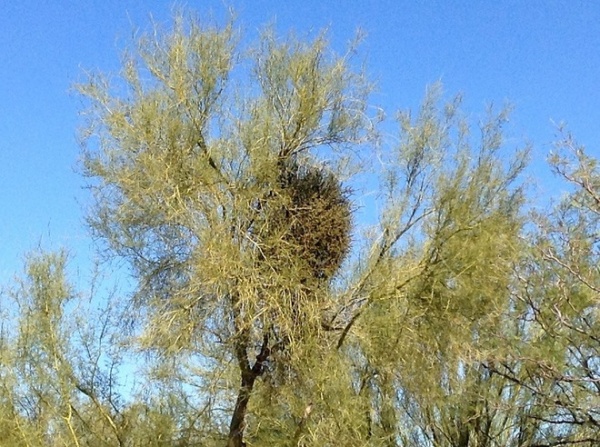
The negatives of mistletoe. Mistletoe does not kill trees by itself. It helps to remember that mistletoe is a natural part of the desert, and it dies if its host dies. That being said, mistletoe does cause stress to the tree, which can shorten its life and be a contributing factor in its death. Old and/or stressed trees are more adversely affected by mistletoe, but rarely will mistletoe cause the death by itself. Healthy trees are less likely to suffer negative impacts from mistletoe.
Shown: The globular growth of P. californicum growing on a palo verde tree
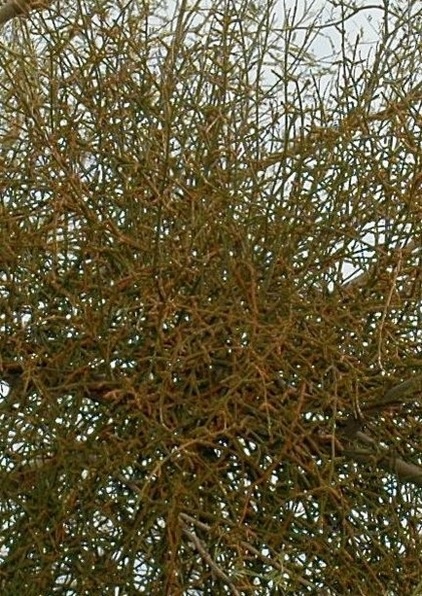
Do you need to get rid of mistletoe? While mistletoe is a natural part of the ecosystem and does benefit wildlife, there are some circumstances that make it best to remove it. In general, healthy trees can handle some mistletoe growing in their branches with little negative effect.
Here are two situations that I discuss with my clients to help them decide whether or not to remove mistletoe.
If the tree is a focal point of the landscape and is prized for its ornamental value, you may want to remove any mistletoe growing in it.In a neighborhood setting — you may not mind mistletoe growing in your tree, but your neighbors may not appreciate birds spreading it to theirs. In this case you may want to remove any mistletoe.There are other ways to deal with mistletoe if neither of these situations applies to you. You can let mistletoe grow naturally and enjoy the birds who come to visit. Alternatively, you can periodically prune the mistletoe every couple of years to slow its growth.
Shown: P. californicum
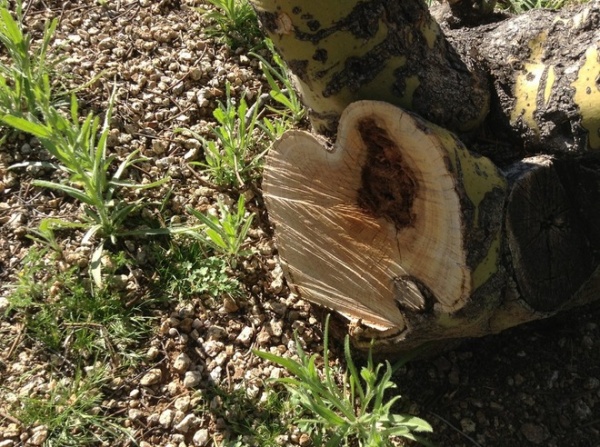
There are no effective chemical controls or herbicides for mistletoe. You can manually get rid of it when smaller branches are affected. Prune the affected branch 1 foot beneath where the mistletoe occurs. This should remove all of the mistletoe plant, including the haustoria inside the branch.
If mistletoe is growing on a large branch or the tree’s trunk, complete removal isn’t wise or even possible. Controlling mistletoe is preferable in that case. Simply brush the stems of the mistletoe off with your hands (they come off very easily). Use a long wooden handle to remove mistletoe growing higher up. This method will not get rid of mistletoe, but it will slow its growth and minimize its effects on your tree.
Whether you see mistletoe as an unwelcome parasite or as a wildlife food source that is a vital part of the ecosystem, it is important to remember that it has been part of the ecosystem long before humans ever came along.
Shown: The interior of a branch where the haustoria of a mistletoe can be seen. (The mistletoe will grow back from the haustoria.)
Region by region: What to Do in Your Garden This Month












